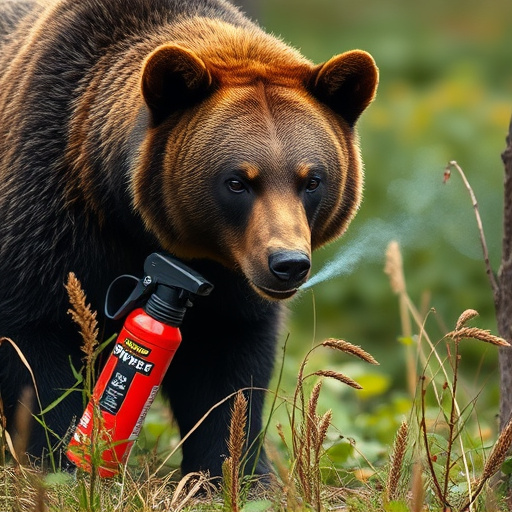Bear spray, though popular for self-defense in Canada, faces regulatory scrutiny due to its non-lethal capsaicin ingredient. Strict shipping guidelines, including Transport Canada compliance and provincial restrictions, ensure public safety. Choosing high-concentration products and understanding proper usage techniques maximize effectiveness against bears, while doubts remain about its range against other predators. Adhering to Bear Spray Regulations is crucial for safe shipping and use in Canada.
“In regions where wildlife encounters are common, bear spray has emerged as a popular defense mechanism against predators. This article delves into the effectiveness of bear spray, particularly in Canada, where regulations surrounding its shipping and usage are stringent. We explore whether it’s a legitimate predator defense or merely a marketing gimmick. By understanding the product, its legal framework, and best practices for use, individuals can make informed decisions to enhance their safety in wild environments.”
- Understanding Bear Spray: Effective Predator Defense or Marketing Gimmick?
- Bear Spray Regulations in Canada: What You Need to Know Before Shipping
- Choosing and Using Bear Spray for Maximum Safety and Effectiveness
Understanding Bear Spray: Effective Predator Defense or Marketing Gimmick?
Bear spray, also known as bear repellent, has gained significant attention as a tool for self-defense against predators, especially bears. It is marketed as an easy-to-carry, non-lethal option for outdoor enthusiasts and residents in bear country. However, when it comes to its effectiveness against other predators beyond bears, there is a growing debate.
In Canada, where Bear Spray Regulations are stringent, the sale and shipping of bear spray are carefully controlled. While this ensures responsible handling, it also raises questions about its true utility. Some experts argue that bear spray may provide a false sense of security, as its effectiveness against non-bear predators is not well-documented. The spray’s active ingredient, capsaicin, can cause irritation and temporarily disable a target, but its range and reliability in deterring various predators are still uncertain. Thus, it’s crucial to consider if the marketing claims align with practical outcomes when facing different wildlife encounters.
Bear Spray Regulations in Canada: What You Need to Know Before Shipping
Before shipping bear spray in Canada, it’s crucial to understand the strict regulations surrounding its transport. The Canadian government has implemented these rules to ensure public safety and maintain ecological balance. Bear spray is considered a controlled substance, and its movement across provinces and borders must adhere to specific guidelines. These regulations are designed to prevent misuse, unauthorized distribution, and potential harm to both people and wildlife.
When shipping bear spray within Canada, you’ll need to familiarize yourself with the requirements of Transport Canada and any provincial restrictions. This includes proper labeling, packaging, and documentation. Bear spray containers must be clearly marked with the product’s name, ingredients, and safety instructions. Additionally, shipments should include a detailed manifest outlining the contents, quantity, and intended destination, ensuring transparency throughout the process.
Choosing and Using Bear Spray for Maximum Safety and Effectiveness
When it comes to choosing bear spray, understanding the product’s effectiveness against various predators is key. Look for a can with a high concentration of capsaicin, the active ingredient known to deter bears and other wildlife. Check local Bear Spray Regulations in Canada, as shipping restrictions may apply due to its potent nature. Ensure you select a brand that complies with these guidelines to guarantee both legality and safety when purchasing.
Proper usage is equally important for maximum effectiveness. Always carry the spray close at hand, preferably within arm’s reach. Practice target practice so you know how to aim accurately under stress. Aim for the bear’s face and eyes; this will increase the likelihood of a successful deterrence. Remember, early detection and noise-making are primary defense strategies, but bear spray serves as a reliable backup when faced with an aggressive encounter.
In conclusion, bear spray can be an effective tool for self-defense against predators in certain situations, but it’s crucial to understand its limitations and follow proper usage guidelines. Regarding bear spray regulations in Canada, shipping restrictions exist for a reason, ensuring safety and responsible handling. By understanding these regulations and choosing the right bear spray, individuals can increase their safety when navigating potential predator encounters in Canadian wilderness areas.
